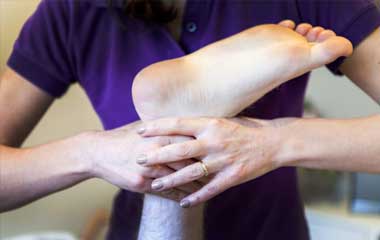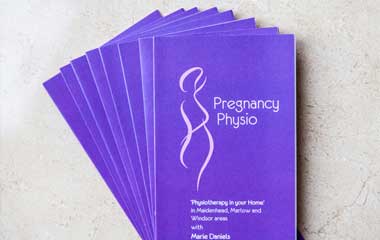
Rotator Cuff muscle strain or tear
A tear in one of the rotator cuff muscles is more common in athletes often related to overuse and can lead to wearing down or degeneration of the tendon causing pain and arm weakness. Pain is usually present at night, particularly if lying on the affected shoulder and when lifting and lowering your arm or with specific movement.
The pain and weakness in the shoulder may make routine activities such as combing your hair or reaching behind your back more difficult.
Physiotherapy can help with:
- Soft tissue techniques and massage
- Taping to support the shoulder joint and reduce pain
- Ultrasound to control the inflammation
- Acupuncture for pain relief
- Strengthening exercises
- A referral to a Shoulder Specialist if Physiotherapy is not effective
Rotator Cuff Tendinopathy
Stability from the shoulder joint comes from a group of 4 muscles called the rotator cuff. Tendinopathy refers to swelling and weakening of the tendons of the rotator cuff muscles. This can occur from overuse or faulty biomechanics or excessive load on the rotator cuff muscles causing instability, muscle weakness or capsular tightness and poor movement control when using the arm.
Physiotherapy can identify which rotator cuff muscles are involved through a series of tests and the cause of your shoulder pain.
Physiotherapy can help with:
- Soft tissue techniques and massage
- Taping to support the shoulder joint and reduce pain
- Ultrasound to control the inflammation
- Acupuncture for pain relief
- Exercises, stretching muscles that have become tight due to overuse and strengthening muscles that have become weak to improve the shoulder mechanics
- A referral to a Shoulder Specialist if Physiotherapy is not effective
Impingement
Shoulder impingement occurs when the rotator cuff tendons are pinched as they pass through the narrow space between the bones of the shoulder. This causes irritation of the rotator cuff tendons resulting in pain, swelling and reduced range of motion within the shoulder joint. Pain is located at the front or outside of the shoulder and is worsened when you lift your arm above your head or reaching tasks.
Physiotherapy can help with:
- Soft tissue techniques
- Taping to reinforce good posture
- Posture correction by lengthening tight muscles through stretching and strengthening weak muscles around the shoulder
Frozen Shoulder
The medical terminology for a frozen shoulder is known as adhesive capsulitis. It is a common condition that causes severe pain and loss of movement in your shoulder joint and occurs when the capsule that surrounds the shoulder joint thickens and tightens, restricting its movement.
Often, there is no known cause linked to this condition, but it is more common in middle-aged population around 50 years of age and the diabetic.
There are 3 stages of this condition:
The first stage is the ‘freezing’ stage and is the most painful, often causing severe sleep disturbance. Patients start to notice a loss of shoulder movement, lasting anytime between 3 and 9 months.
The second stage is the ‘frozen’ stage where there is noticeably more restriction in shoulder movement but pain eases significantly, lasting between 4 and 12 months.
The third stage is the ‘thawing’ stage where movement in the shoulder starts to return.
The duration of this condition is variable, ranging from 5 to 18 months. Diabetics can take up to 2 years to resolve as their healing properties are compromised.
Physiotherapy is helpful with:
- Joint mobilisations to reduce pain and stiffness
- Massage to loosen surrounding muscles
- Ultrasound to stimulate blood flow and for pain relief
- Acupuncture to reduce inflammation and pain
- Exercises, involving strengthening, stretching and proprioception to optimise recovery
- A referral to a shoulder specialist maybe required for a steroid injection followed by an intensive physiotherapy programme. For more persistent symptoms, joint distension (hydrodilation), shoulder manipulation or surgery is needed with continued physiotherapy.
Bursitis
Within the shoulder joint are several fluid- filled sacs called bursa which help to reduce friction in your shoulder spaces. Sometimes, they become inflamed (bursitis) and rub against the shoulder joint and various soft tissue structures (ligaments, roator cuff tendons) that help to stabilise the shoulder joint. The pain is often described as a constant dull ache and located over the shoulder. A bursitis is commonly caused by repetitive motions that put pressure on the bursae, such as throwing a ball and people who habitually sleep on the shoulder curled up.
Physiotherapy can help with:
- Manual therapy to reduce shoulder pain
- Joint mobilisations to restore movement
- Exercises to improve posture
Dislocation/Instability
The shoulder joint is the most mobile joint in the body and as such, is the most likely joint to become unstable or to dislocate. In most instances, this is as a direct result of trauma usually while playing sport, with a sudden onset of acute shoulder pain and the patient describing a feeling of the shoulder ‘popping out’.
Physiotherapy can help with:
- Acute management following a dislocation with ultrasound for pain relief, early mobilisation of the shoulder to restore movement loss
- A progressive strengthening programme to help stabilise the shoulder joint
- Taping to reinforce and stabilise the shoulder and prevent another dislocation during sport
- Manual therapy to mobilise stiff joints that maybe contributing to the problem
- Referral to a Shoulder Specialist if surgery is required to stabilise the joint








